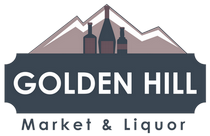ABOUT THIS STORE
FAQs
DO YOU HAVE QUESTIONS?
We Have Answers
A: Golden Hill Liquor only sells alcohol to individuals 21 years of age or older. We’ll ask for an I.D. to verify your age, so be sure to bring yours when shopping for alcohol.
A: Of course, we sell a huge variety of liquors, including Tequila, Whiskey, Vodka, Gin Rum, Cognac, Brandy, Champagne, Wine & more! But that’s not all we sell! We also offer a wide selection of snacks, candies, sodas, juices, teas, ice cream, cigarettes, and many essential grocery items include disposable plates, cups, napkins, detergents, hot sauces, pet food, and more! Don’t be afraid to stop by!
A: Golden Hill Market is proud to offer customers great hours all week long! Our hours of operation are consistent every day of the week:
- Monday: 8AM–2AM
- Tuesday: 8AM–2AM
- Wednesday: 8AM–2AM
- Thursday: 8AM–2AM
- Friday : 8AM–2AM
- Saturday: 8AM–2AM
- Sunday: 8AM–2AM
A: Yes, your safety is important to us, so we require that all customers wear their masks while shopping at Golden Hill Market. We have safety dividers at check out to ensure your safety!
A: Within the Cognac industry, there is a system of certification of age. The certificates are based on how long the cognac has spent time in oak:
- VS (Very Special) – is at least two years old.
- VSOP (Very Superior Old Pale) – also called a reserve and at least four years old.
- XO (Extra Old) – also called a Napoleon is at least six years old. Most cognac houses will use older than those required by law. Many allow their XO’s to reach a minimum of 20 years in order to reveal their best.
A:
- Blanco (white) tequilas are not usually aged. These tequilas express the character of the agave in its purest form. Blanco tequilas may also be called “Silver” or “Plata”.
- Reposado (rested) tequilas are aged a minimum of two months in oak barrels, although they are typically aged between three and nine months. Due to the hot climate, the oak “resting” mellows the flavors and imparts color.
- Añejo (aged) tequilas are aged in oak barrels for at least a year, although they are typically aged between one and three years. Considerable complexity often develops with the greatest Añejos approaching very fine Cognacs in style
A: Single malt whisky is produced at a single distiller and made only from malted barley. Each region has its own unique style of malt whisky, and it is usually possible to distinguish in which region of Scotland a particular whisky was made. However, the style of the distiller can also play a key difference in how a whisky tastes.
Blended Scotch whisky is a mixture of any number of whiskies from different grain and malt distilleries. Standard blends will rarely state an age on the label, however usually the youngest spirit is at least three years old. The quality of the blend will greatly depend on the nature of the malt whiskies it contains.
A: The name “Vodka” is a Slavic word that translates as “little water.” This is probably the world’s oldest spirit, with documentation showing its production in Russia going back to the ninth century. Early vodkas were flavored with herbs, fruit, and spices to mask the harsh flavors. The charcoal filtering technique for mellowing and purification was not developed until the eighteenth century.
A:
- Brandy – a spirit distilled from wine or fermented grape juice which is aged for at least six months. Brandy is made widely around the planet.
- Cognac – is the most famous type of Brandy in the world. It’s a benchmark by which most other Brandies are judged. The Cognac region is located on the west-central Atlantic coast of France, just north of Bordeaux. The primary grapes used in making Cognac are Ugni Blanc, Colombard, and Folle Blanche. The wines made from these grapes are thin, tart, and low in alcohol, which is a poor characteristic for table wines, but perfect for making Cognac! Produced only in the Cognac region of France, the wine is distilled twice in copper pot stills. The finished product is clear and adopts its beautiful amber color after many years in French oak barrels.
- Armagnac – claims a longer history than Cognac, probably having been first produced in the 12th century. The Armagnac region is located in the southwest corner of France. Distillation takes place in the unique type of column still that is even more “inefficient” than a typical Cognac pot still. The resulting brandy has a rustic, assertive character and aroma that requires additional cask aging to mellow it out. Most Armagnacs are blends, but unlike Cognac where single vintages are produced by few houses, Armagnac single vintages and single vineyard bottlings can be readily found.



